#reusable cotton rounds
Explore tagged Tumblr posts
Text


1 note
·
View note
Text
bought this weird flamnel jacket thing in like. 2014 lol didnt try it on in store bc hey! its a 2x! it should fit! got home and It Did Not Fit

so i just shoved it in my closet bc its Purple Flannel and I Wanted It. I'm finally cutting it up to make reusable cotton rounds lol gonna learn how to use the serger :)
#bookbird babbles#snapshots#i thought i would get maybe 10 or 20 rounds#i uh. habe significantly more than that !#i forget my sewing tag brb#thats sew ezra#maybe? theres one (1) post there
15 notes
·
View notes
Text
In search of compostable clothing closures
Making clothes that are 97% biodegradable is surprisingly easy. Pick a natural fibre fabric, buy some 100% cotton or linen thread, and you're there. (You can even get 100% cotton overlocker thread - though you have to go searching for it.)
Those last few percent, though? That can be tough. One of the biggest offenders is closures. While there are plenty of clothes that don't need something to hold them shut, I confess I like having the option. Below is a round-up of various closures, and their compostability.
Note: for the purpose of this article, I'm treating metal closures as "compostable", in the sense that they're 1) easy to remove before you compost the rest of the object, and 2) infinitely reusable on other things, unless they break - at which point they're usually recyclable using our current commercial systems. And remember, re-using things that already exist is always preferable to buying new, "better" items.
Buckles/Rings
While less common than other closure methods, I find buckles, D-rings and O-rings are great when used in the right context. They're usually metal or plastic, neither of which are compostable - but metal will last practically forever, if it's good quality. Plastic tends to degrade over time, especially if exposed to the sun.
I find rings especially quick and easy to use, and a set of D-rings can give a very fine-tuned amount of tightening. My favourite belt uses two square D-rings instead of a buckle closure.
Buttons
The humble button, while ubiquitous now, took a while to catch on. Buttons as a common method of closure didn't become popular in Europe* until about the early 1300s, around the same time that the tailoring revolution[^] happened.
Nowadays, plastic is by far the most common material that buttons are made from. It's cheap and sturdy, but obviously it doesn't compost. So what are some alternatives?
Liz Haywood, a pattern maker who focuses on zero-waste designs, has thought a bit about this conundrum here. There's photos of several different DIY compostable and recycled buttons in her post.
For a completely compostable garment, wood, leather, horn, fabric, and thread buttons are your best bet. If, like most sensible people, you remove the buttons from something that's about to be worm food before you ditch it, the options expand considerably - metal, clay, recycled bottle caps, even glass buttons are all possible. You can have a lot of fun with making your own buttons - to match an outfit, or contrast with it, or maybe you'd like a different button for every buttonhole...
Another, related option is cufflinks - 18th century shirts often used cufflinks on the sleeves and one or two small thread buttons on the collar. That way one set of cufflinks could be used on multiple shirts, showing off a bit of wealth, while saving them from the (admittedly harsh) laundry practices of the day.
[*]: I have no doubt that buttons became popular in other parts of the world, too, but unfortunately I don't know much about it. Europe in the 14-15th century is my main area of study, mostly due to the fact that the historical re-enactment group that I'm a part of operates in that time period.
[^]: The tailoring revolution refers to the period where garments for the higher classes underwent a dramatic change in the way they were cut out. The very short version is, fashion garments shifted from primarily rectangular construction to more form-fitting, using the precursors of many standard cutting practices used today.
Elastic
While elastic isn't technically a closure, it's used that way in many different objects. Most elastic nowadays is made from polyester and synthetic rubber. No composting there.
But, all is not lost! You can now find elastics made of natural rubber and cotton! (I was quite impressed by this, to be honest. I thought I'd have to give up elastic for good.)
The downside, as is usual when you actually give a crap about the planet, is cost. You'll mostly only find it for sale online (Etsy has several options), and it can be more expensive (especially factoring in shipping). Prices on the compostable elastics I found were comparable to a mid-range polyester elastic at Spotlight (before shipping). I think that's actually pretty good, all things considered. (I don't trust the cheapest elastic, it loses its stretch ridiculously fast. A fact I discovered to my sorrow only after buying a 20m roll of it.)
As a bonus, supposedly natural rubber elastic lasts longer than synthetic elastics - this has been my experience with many natural vs synthetic things, but I haven't tested natural elastic specifically to know for sure.
The biggest downside here is the rubber - if you're dealing with a latex allergy, this is not the solution for you.
Hooks and Eyes
While these have fallen out of favour over the years, they do have their uses in a compostable closet. They're easy to buy, and easy to make if you can get hold of the wire - all you need is a set of needle-nose pliers.
Being metal, the hook/eye can be re-used until it breaks - which takes a while. Like buttons, they're easy to take off a garment and move to another one. Unlike buttons, they don't need a buttonhole - you can move both the hook and eye almost anywhere on a garment, really refining the fit of an item.
They are, however, somewhat limited in that application - hooks and eyes work best if they're under a small but constant amount of tension, pulling in opposite directions. I once tried to use hooks and eyes on a loose-fitting medieval tunic, and it just didn't work.
Laces and Ties
Before buttons became The Big Thing in medieval Europe (and for quite a few centuries after), laces and ties were the closure method du jour. Why did they stick around so long? The same reason pyjama pants often have a drawstring in them - they add adjustability to garments in a simple and easy to use (and create!) way. Stays and corsets are one of the most recognisable examples of this concept in action.
Lacing does work better on some things than others, but just about anywhere that you'd put elastic nowadays can likely use a drawstring instead. And there are some patterns (YouTube link) for adjustable garments that use lacing as an integral part of the design.
The main downside for me? They can be slow to use, and awkward, if you have difficulty with fine motor control. Mine is variable enough that I'll usually opt for a different closure, unless lacing or ties really is the best or only option.
Snaps
Confession: I adore snaps. They're fast and easy to use when my hands don't want to co-operate, and they can be wonderfully decorative as well as functional.
There are two general types - those you sew into place like you sew on hooks and eyes, and ones that are applied to the fabric using a press. The former takes more time to install, but can be replaced relatively easily if they stop working. The latter can technically be replaced, but it's a LOT harder and you risk damaging the fabric behind it while you try. They're also more likely to rip out of the fabric in the first place.
As for material, it's pretty much just metal and plastic (sometimes a combination). From a sustainability standpoint, metal is the better option - as long as you recycle it at the end of its life.
Zips
Zips are everywhere nowadays. They're easy to use, but can be hard to replace when they break. Putting them in correctly isn't always a cake-walk either. And in terms of compostability, the answer is definitely "no".
The vast majority of zippers on the market use a polyester or poly-cotton tape, with plastic or metal teeth set into it, and plastic or metal tabs and pulls. Because of the mix of materials, and the size of a typical zip, most municipal waste streams can't take them for recycling. However, textile recyclers` such as Upparel usually take zips (and the things they're attached to!).
I also found a couple of different manufacturers creating zips out of post-consumer recycled materials - a pleasant surprise, and a strong move towards closing waste streams.
[`]: Clothing retailers are increasingly taking responsibility for their part in reducing waste by offering recycling programs through their stores. Recycling Near You and Frankie list some of the major programs in Australia, though it's worth noting that most of those listed only want whole textiles or large pieces - to my knowledge, Upparel is the only place that will take scraps, broken textiles, and related.
If I've missed a closure type, or you know of places selling compostable or truly recyclable versions of any of the above, I would love to hear about it. While I'm (currently) a far less prolific sewist than the blog name implies, I want to be deliberate and thoughtful in my sewing choices going forward.
Also, as a last random thought, I wonder if anyone has started making bioplastic versions of any of the above? *Wanders off to do some research...*
Originally published at my blog: https://garaksapprentice.blogspot.com/2023/09/in-search-of-compostable-closures.html
16 notes
·
View notes
Text
no one asked but here's my skincare routine xx 🌚 (including pictures of all the products !)

i'm a teen with acne-prone slightly sensitive skin that gets oily by the end of the day🧖♀️
(i'm 99% sure i'm allergic to salicylic acid bc it didn't help with my breakouts/caused them so i avoid it in my routine❕)
as a makeup remover i use the elf holy hydration makeup melting balm 🚿

& a makeup eraser cloth 🧽

for stubborn waterproof eye makeup i use garnier skin active micellar cleaning water all-in-1 waterproof (aka the blue one) i have a huge bottle of it :)💧

(i want to start using reusable cotton rounds so pls lmk of any good brands !)
i just ran out but if i haven't worn makeup but my pores feel especially clogged i use the burt's bees oil cleanser 🥥 (you do have to double cleanse with a water based cleanser afterwards !)

for a daily water-based facial cleanser i use two different ones
the cerave foaming facial cleanser 🧼 "oil control" on the bottle is no joke ! i don't get oily in the day anymore bc of the niacinamide in this :)

but it can be a little drying/strong so i mix it with the cetaphil gentle skin cleanser 🛁

i use this really cheap & generic silicone face scrubber for my nostrils/chin/sideburn-hairline area 🧽

once a week i use this scrub pixi peel and polish its a mask with physical and chemical exfoliants
it smells like lemon cucumber water🥒 and can also be used for body acne on the chest, back, & arms !!
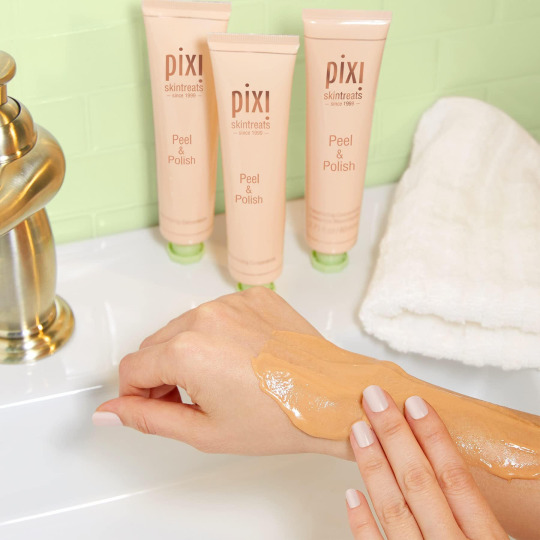
once a week i use an AHA chemical exfoliant it's elf supertone toner 🌝 it has glycolic acid and is has a little bit of a lemony scent
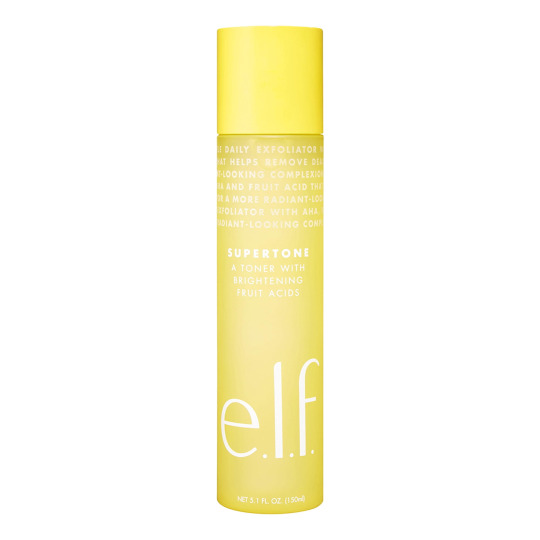
what i use as a daily toner is thayer's rose-scented witch hazel spray 💌 it calms down any redness i have instantly !
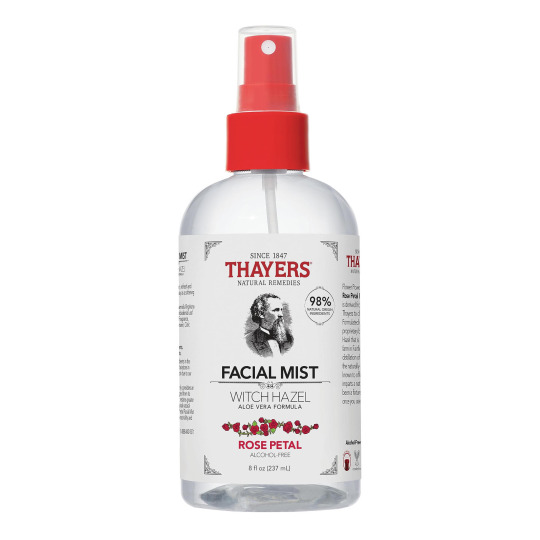
i used to use the cerave daily moisturizing lotion but it was a little oily and it was impossible to apply makeup on 🧘 so now i use it on my hands before doing my facial moisturizer

and for that i use a mix of elf holy hydration gel-yeah moisturizer and elf holy hydration face cream 💦 it's pretty self-explanatory but the former is a clear gel and the latter is a white cream, i adjust the proportions for my moisture needs :) ⛲️
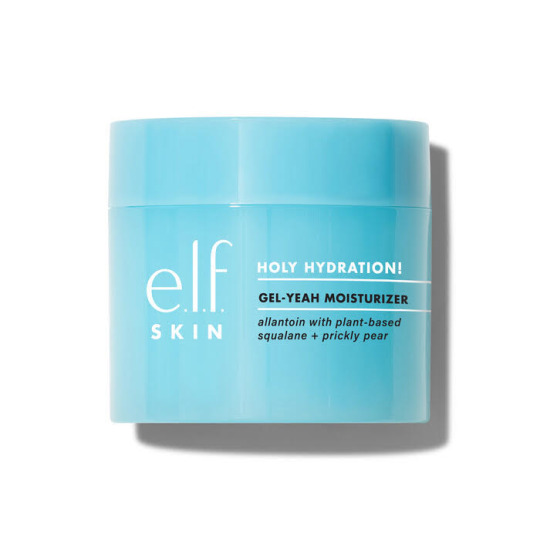
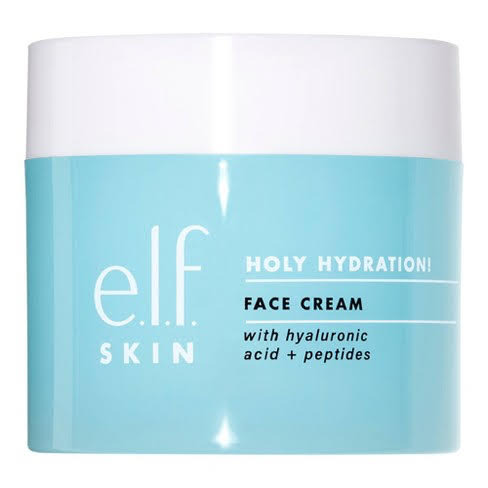
in the winter or if my face feels dry or in need of healing i use clinique moisture surge overnight face mask 🦪
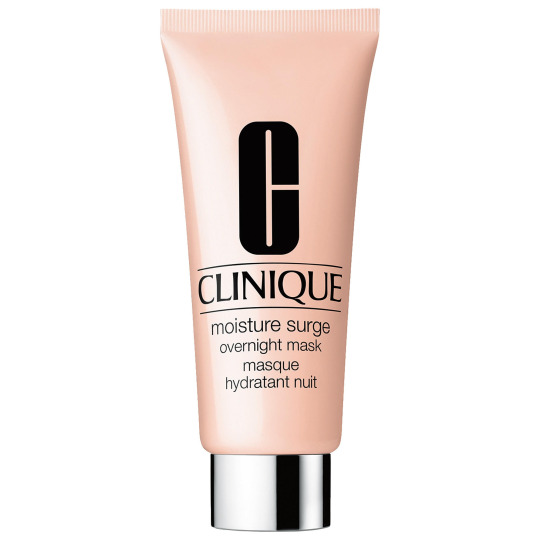
"mask" is a little misleading as you just apply it with your moisturizer like any other lotion 🧴 it's super hydrating, it's a little expensive but i got it as a gift and a little goes a long way ! :)
after a breakout has healed completely i use a little bio oil on top of my moisturizer to fade any dark spots/scars 🐚
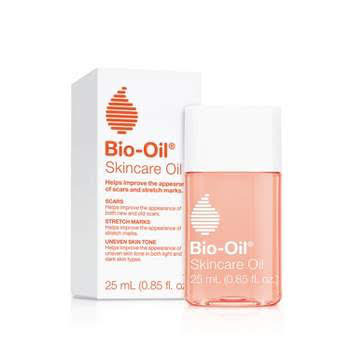
after i shower and exfoliate my lips i use this random lip mask from bath and body works that's watermelon scented 🍉 it's thick (a little goes a long way) and yummy
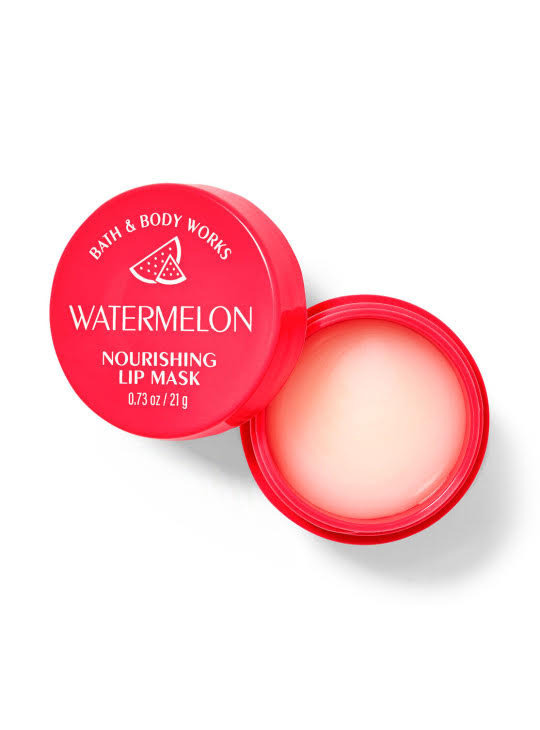
i also use smith's rosebud salve in this tin 🌹 it's like a nice scented vaseline

i don't use it all the time bc it's expensive but i love the mario badescu caffeine eye cream💆it's so good for my sunken dark circles ! but avoid getting it in your eye and keeping it in the bathroom bc it curdles if it gets too hot from shower steam

for active acne spots i use might patch pimple patches 🩹regular for whiteheads and micropoint ones for swollen spots under the skin
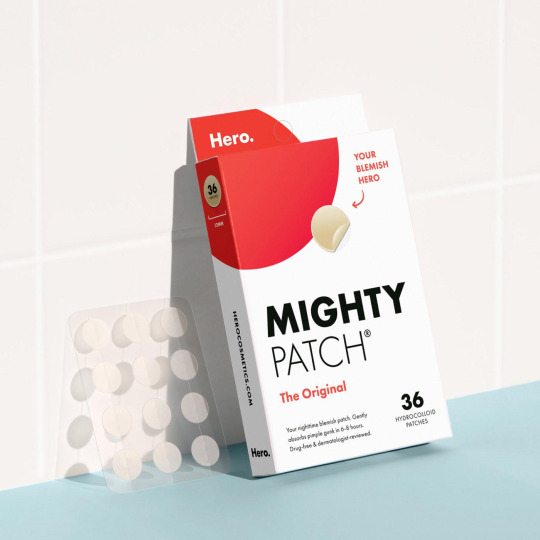
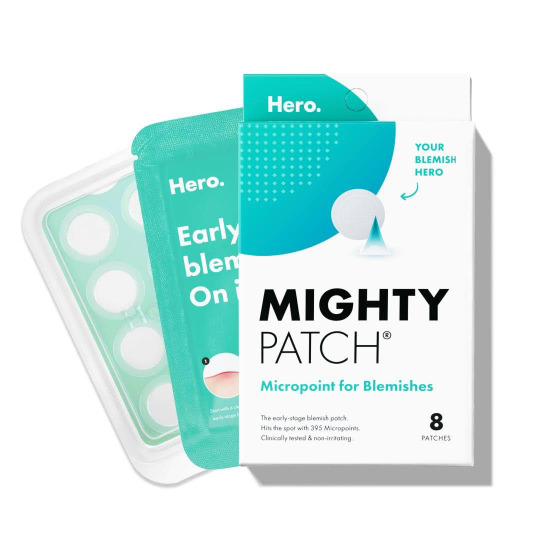
those are pretty expensive so for smaller spots i use mario badescu drying lotion overnight 🫧
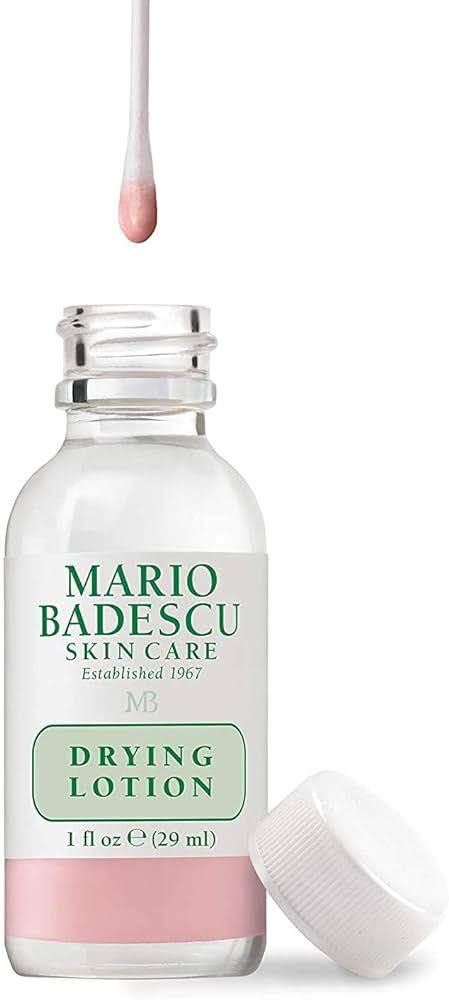
i'm pretty bad at remembering sunscreen in the morning but i just got the glow recipe dew balm with spf 45 and niacinamide 🌸 i love the glow and the light fruity scent :)

i do want mention that my life-saver game-changer for stopping cystic acne (those painful lumps deep in the skin) and just acne in general has been hormonal birth control pills ! after i started BC for pcos/hormonal reason all of my breakouts decreased significantly🪽
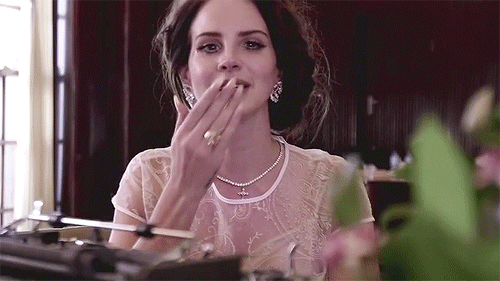
tysm for reading !! 🕊️ xx
#skincare#skincare routine#that girl skincare routine#that girl#just girly things#acne#acne treatment#sensitive skin#breakouts#makeup#makeup remover#eyes lips face#elf skincare#waterproof makeup#pores#cleanser#cleansing balm#cleansing oil#micellar water#sebaceous filaments#cerave#cerave cleanser#cetaphil#cetaphil cleanser#oily skin#acne prone skin#face#exfoliation#exfoliator#scrub
3 notes
·
View notes
Text
i typed out and deleted a post about reusable menstrual items prompted by an annoying ad but realized my personal opinion on these items do not matter. anyway i looked at the ad again and got pissed off again for another reason

cuz like the text appeals to the idea of reducing your waste and helping the environment yeah okay w/e thats not fucking effective on a global scale but what ever
but the fucking ad is about the Cost of these things and demeans the reader [assumed to be A Women] by comparing the "amount saved per year" (and by what metric are these numbers gathered?) to the cost of. a fucking Pumpkin Spice Latte. you know. because every menstruator looovvvvees a pumpking spice latte and is stuuuuupid so She doesnt know that $220-$30=$190 and that is a lottttt of money and you can buy sooooo many pimpgkjn spcieb larbnees with that #girlmath
like wooow now i can buy 15 more pumpkgmfnmgnfmfnfjnfbf per year for the next 2 years according to the math on this ad oooooooooh my goooood stopppppppp
like. okay. okay ill do the math!
lets say the statistically average person menstruates for 6 days a month, every month. over the course of 2 years [24 months] , that equals 144 days of menstrus. menstrual products need to be replaced about every 8 hours on average. therefore, assuming the use of 3 tampons per each day of menstrus equals 432 tampons over the course of 2 years. a quick google search found that i can buy a box of 45 tampons for $10. im gonna round up to the nearest box of 45 and say that, over the course of 2 years, a statistically average person might spend around $100 on tampons. which is less than half of what this ad wants you to think you are spending!!
and sure. yes. $30 is still less than $100, saving $70 over the course of 2 years. by this metric thats 11 godforsaken seasonal beverages!
but now! now! instead of disposing of each sodden strip of cotton and inserting an unsoiled product, you must rinse out your viscera in the sink and re-insert that product! what fun
and of course the numbers for everything i calculated vary WILDLY from length of menstrus to product cost. but i feel that ive still illustrated my point well enough. for this wayyyy too long silly post about a stupid advertisement on tumblr.fuck
and you know what. i looked at the damn wikipedia page for tampons and theres a section on cost!

so you can tell that the advertisers for this product did not even look at wikipedia before spitballing an amount! which even at its assumed Maximum is $180 [for 2 years] which is STILL $40 less than what this stupid ad says!!!!! fuck! i hate advertising
#i spent a good 20 minutes on this. idk why#wahoo period math. ?#all things considered this took like an hour actually. whoops
6 notes
·
View notes
Text
How I clean myself while chronically ill
For reference: My main disabilities related to hygiene are POTS, ME/CFS (moderate-severe), and cognitive/executive functioning disabilities (due to ME/CFS, autism, and a dissociative disorder). This is not universal, it's just how I do it. You might or might not find this helpful, I've just found that it is for me specifically.
So, you've recently found yourself unable to shower the way you usually do. You've just been finding yourself overwhelmed every time you think about getting in, even with a shower chair. That's rough, buddy. Fortunately, you're not the only one, and while I am by no means an expert, I have experience with this. So here's how I do it, free for you to adapt as you like.
Are you ready? OK, let's begin.
[TL;DR: Use shower wipes, micellar water, and a fine toothed comb to keep your body as clean as possible without needing to get out of bed or using water. This contains a list of what I use, steps for ordering things, and a completely opinion-based section on haircare. The most important point is to use different wipes for the following: (1) torso, (2) left arm, (3) right arm, (4) left leg, (5) right leg, (6) genitalia and butt - front to back.]
Editing to add something I forgot, but it's important enough to put above the read more: make sure to seal your wipes and put your caps back on. Just spilled the micellar water on my bed.
Step 1: The Supplies
Shower wipes. Getting specific ones for showering (brand doesn't matter) is preferred, but any body safe wipe will do. Make sure at least one type is antibacterial, though.
Deodorant. I recommend nuud because I don't do this whole thing every day and this one works for up to a week (depending on what I'm doing), but again, use whatever works.
Micellar water. Any kind, as long as your skin likes it.
Cotton pads. If you're more able to do things like laundry and don't have memory problems that might cause you to forget them in the washing machine and run out, use reusable ones, but I use disposable.
Moisturiser. Again, whichever you want. (At this point, add whatever other skincare items you like to use, I just want this to be over as quickly as possible.)
A fine toothed comb. Ideally a wooden louse/nit comb if you can find one. (Only applies if you want to follow Step 4.)
Any extras. For me, that's lip balm, lotion, wide nail clippers, and antibacterial hand wipes.
Bonus round for doing this in bed: a container to put all this in, a rubbish bin near your bed that you can reach while sitting in it.
Step 2: Cleansing
(It doesn't matter whether you do face or body first. I do body first, so that's the order I'm writing this in.)
Get the shower wipes out and open the container. If it helps to get them all out at the same time, take out 6. One is for your torso and neck, one is for each arm (do the actual arms first, then focus on the armpits), one is for each leg, and one is for your genitals and butt (in that order, wipe front to back). It's going to be a wipe-down, obviously, but try and be as thorough as possible. For me, the armpits are the biggest issue, so I hold the wipe on for up to a minute each before scrubbing until there's no smell.
I use two cotton pads for my face and neck, one for the left side and one for the right. Really, this one is just washing your face so it's up to you how you do it, but make sure to get behind the ears (I always forget with the shower wipes).
Step 3: The Leave-Ons
(For this one, order does matter, but only if you use the same deodorant as me.)
Do the rest of your facial skincare routine. For me, that's just moisturiser and lip balm, but if you want to use other stuff that's your prerogative.
I don't use lotion every time I do this because mine is really thick, but I always move my joints around with their full range of motion to see if anywhere feels tight and use it if I need to. This saves on energy.
Deodorant is always the last thing I put on because it's a finger-applied product. Ignore that if you use something else.
[Step 3.5: Get Dressed]
Step 4: Hair (or, the opinion piece)
This is probably the most out-there advice I have. If your hair is unrelaxed type 4, sorry, I can't help you.
So I'm describing a product-free method that was used in the middle ages to keep hair clean(er). If your hair is long, you might want to have hairbands, bobby pins if you want, and, if we're being really historically accurate, some kind of cap made out of cotton or linen. I don't use any of those, though, and it works, but mine is short so I have no idea how your hair will react. I don't do this often, only twice a week after at least two weeks have passed since washing my hair. Do this as often as your energy and comfort permit.
Take the comb and brush each piece of hair from directly at the scalp to the very ends in one motion. This takes the oils away from the scalp and gives moisture to the ends at the same time, so unless you have very dry hair, you won't have to use conditioner. It also exfoliates the scalp, if that's something you care about. Do this for 15 minutes or as long as you have the energy for it. (Fun fact: this practice is where the idea that 'brushing your hair with 100 strokes a day makes it silky and smooth' comes from.)
For long hair: braid/plait it to avoid tangling. If you want to put it up, pin it to your head in whatever configuration you want.
The cap lifts things like sweat off your head and makes sure dust and stuff doesn't get on your hair, which keeps it cleaner. A completely optional step, but it's nice so I thought I'd include it anyways.
My hair is type 3a, so I know this sounds very counterintuitive to a lot of type 3 people, but we aren't going for looks, we're going for feeling cleaner (for me, it kind of just goes wavy, not frizzy at all, but I do wait a while before doing it). This is based off a European practice (AKA designed for white people's hair), so if you know of a different way to keep hair clean that works better for your hair, do that instead.
I don't use dry shampoo because it's messy, and honestly unless I'm doing the above, I just wait until I'm well enough to shower.
The End
OK, so that's how I do hygiene. If you're going to take away anything from this post, please let it be the areas of the body each shower wipe should cover. Any less than that (at a stretch you could combine the leg ones) and you could be at risk of getting germs where they shouldn't be or just wiping them around without cleaning them.
Happy not-showering! I hope the rest of your day goes well.
#i don't usually make formal posts like this i'm nervous#but i thought it could be helpful to someone#disability tag#chronic illness#hygiene tips#spoonie#chronic illness tips#ask to tag
48 notes
·
View notes
Text
Okay, everybody relax—I wrote this random crack Steddie fic where Steve was a writer and I wrote this from his point of view and I recently reread it after a long, long time and I was floored so enjoy.
Also it is a present-day set crack fic just to clear up time inconsistencies.
Atlantis.
When I was 10, my parents took me to the Kennedy Space Center Visitor Complex at Cape Canaveral, Florida. I’d been to Disney World a hundred times by then, knew what the air would smell like and how the waves would sound licking the shore right beside the needlessly expensive condo we’d rent in Daytona. I expected roller coasters and cotton candy and to be sick with exhaustion by the end of it, trailing behind my booze-ridden parents, watching other kids get lifted on shoulders, fireman carried, cradled. Sometimes I walked slower than I felt, hoping one of them would have grown so annoyed of begging me to hurry, that they would lift me instead.
They never did.
Instead of a theme park, I got space. Thirty-minute presentations of one spacecraft or another—Apollo 8, Apollo 17, Apollo 11, the Challenger, the Columbia. Tears rolled down my face as we wandered through exhibits of dead astronauts, failures, fuck-ups.
But I cried harder at the successes��the cheers of the control room when Apollo 8 successfully launched, the testimonial of Gene Cernan about being the last man to have touched the moon, and Neil Armstrong himself confiding in the camera, all for a silly visitor center.
I cried the entire day. I hadn’t been able to explain it, and my mother took to believing I was scared of it all. She scolded my father the whole hour it took to get back to Daytona, convinced I had been frightened at the implication of the universe being so vast.
She never failed to misunderstand me.
If there was anything I understood, it was vastness. The echoing hallways of our four-story house, my king-sized bed, the hollow place inside me that burned bigger each time my father left for a business trip, mother in tow. At a certain point, they started forgetting to hire babysitters.
Just me and the house, my own black hole.
It’s hard to comprehend how big a super heavy-lift launch vehicle is until you’re standing beneath it. My legs weren’t long or fast enough to run the length of it. I slowed to a jog half-way, and walked to the tip of the launch escape system. Then I turned around to look for my parents, and they were gone.
I didn’t panic. I knew I would find them at the nearest supply of alcohol—but not just yet. For now it was me and Saturn V, this monstrous thing, it’s vastness like a mirror. One, two, three, four, five impossible structures that might’ve fused into one had it been launched, four that might’ve been abandoned, and one that might’ve returned home. A fraction of what it had been.
My mother always turned up drunk, my father, tired. He would say something of being jet-lagged, and retire. My mother would giggle and invite her friends to the house so she could boast of all her thrilling adventures. Sometimes I wondered if they remembered they had a son at all.
The Kennedy Space Center Visitor Complex has grown in the time since I’ve been there, most notably in their addition of the Atlantis, a spacecraft that traveled in and out of space on nearly 30 round trips. It was the first spacecraft of its kind—reusable. Returnable. Designed with the capacity to come back whole, warm with information, not lacking in love.
I’d like to stand beneath it one day. I’d like to see what I couldn’t when I was ten, to know that these wonderful metal creatures can come back whole.
And that it wasn’t my fault the others could not.
I’m off to cry now, thanks for reading :’)
#steve harrington#writer#Atlantis#kennedy space center#florida#stranger things fanfic#fanfiction#steddie#eddie munson#space
15 notes
·
View notes
Text
literally cannot stop calling things potions and elixirs. in the morning i take my elixir of oat and magic bean. in the afternoon i use a vaporizing device to inhale the fumes of my elixir of hemp. at night i wash my face and then apply with a reusable cotton round the potion of paula’s choosing
4 notes
·
View notes
Text
a collection of eco friendly lifestyle ideas + swaps from various sources around the web:
reusable makeup remover wipes/cotton rounds - i use these and they’re way softer on the skin and bigger so you can use multiple times before washing either in sink or with a laundry load.
cutting products open when they are almost finished - will acc save a lot of money and means that even if buying sustainably is inaccessible to you (valid!) you can make products last for longer
freeze your overripe fruits for smoothies - all tastes the same, means you can make ur own cute lil smoothie mixes and they are often thicker!!
wash dry and reuse plastic bags - they’re almost unavoidable, but you can reuse them easily (i do this for my lunch!)
buy slow fashion - to some this might be too pricey which is totally fine!! but for my uk ppl: run and fly, lucy and yak, and fat face all look rly good and have fun clothing.
eat plant based food - you don’t have to be a vegetarian, you can do meat free monday or just choose the mcplant over a normal burger at maccies! quorn has acc aamzing chicken nuggets and often supermarkets have vegetarian aisles!
support your local farmers market - they often do not wax their apples and you will actually be able to support local businesses instead of big corporations! they also are just fun to go to :)
use a bar dish soap and a bamboo brush
to wash your body, buy bar soap and a net type pouch for it to be able to save it and exfoliate, often less expensive and not packaged in plastic, more scents or you can even make your own!! i’ve heard black african soap is rly good!
use a recycled plastic toothbrush over a normal one - you can use bamboo, but for me bc of sensory issues i can’t, so this is a nice compromise!
use beeswax wraps for food instead of clingfilm - they are more sticky and thick so accessible for people with motor issues (maybe, correct me if i’m wrong but less delicate?) and they have fun patterns and are available from lots of small businesses
instead of liquid hand soap, either use a bar soap or my preference would be a glass pump bottle and tablets that you can dissolve as i find bar soap hard to handle, but bar soap you can keep in tins!
use a reusable water bottle - you can fill them with fizzy drinks or energy drinks, there’s no rules against this!! they keep your drink cold and are sturdier then plastic, and definitely cheaper!! you can also draw on some or stick stickers on to make them more ‘you’!
use cloth napkins and ‘unpaper’ towels instead of rolls of paper towels
buy in bulk
use an ice tray or machine instead of buying big bags from the store - less heavy definitely, and you can add fruits and make ice pops with trays!!
use a refillable or natural deodorant- i use wild (uk ppl!!) and it smells nice, the refills are easy and come in paper and i have a rly cute metal holder!!
you can get reusable cupcake papers - esp for my ppl who like the lick the bottom, they won’t fall apart XD!
use a kindle - reduces the amount of paper books you have to buy, easily transportable, can lend books out to ppl and cheaper books!
bring your own lunch - esp if ur a picky eater like me, i often bring a cheese sandwich and some crisps places so i’m not stuck not eating or choking down food i don’t like and leaving leftovers, also means you can use your own plastic tupperwares instead of store bought single use things lol
grow your own things - i used to grow strawberries as a child and it was surprisingly easily, some ideas are bottle tower gardens and a kitchen herb gardens, you can also grow cat grass and catnip for all my cat parents out there :)
collect rainwater for your plants - just keep a mason jar in your backyard if you have one, or journey out when it’s raining and fill a jar, will last you a bit!!
that’s all i have for now but feel free to add more!!
10 notes
·
View notes
Photo

RAID CHLOE’S CLOSET (THE WARDROBE CHALLENGE)
Fashion has always been a huge part of Chloe’s identity. It has always been one of her favorite ways to express herself and she majored in it at Cornell before switching her mind when she learned about how the fashion industry is hurting the planet through fast fashion. Chloe’s style is very simple and she usually just sticks to one color palette when she dresses herself. She’s not too fussed if she wears something from a big brand, but she prefers to only buy second hand clothes. A lot of the time, she just makes whatever she wants to buy because she has the knowledge to do it. She thinks that in another life, she’s a fashion designer.
Listen, whenever I see these ladies on my Instagram feed I always immediately go, “Oh, Chloe would totally wear that!“ and so I decided to showcase the outfits that scream Chloe to me.
Whenever I come up with a character, the two major things that help me visualize them as a person (outside of their background and personality) are music and clothes. For Chloe’s style inspiration, I really think Tess Christine, Dacey Cash, and Ashley (bestdressed) really capture the aesthetic and style of how I picture Chloe dressing. Greta herself is also one of the biggest style inspirations when I think about what Chloe would wear.

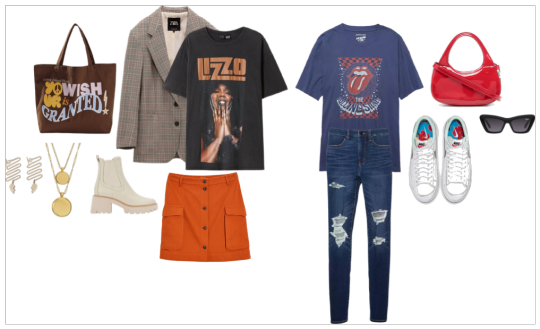
I can’t even say that Chloe’s style is really one thing, it’s actually pretty much all over the place. Some days she’ll wear earth tone colors or all beige, or a mix of colors. It really just depends on how she feels during the day. Like, if she’s feeling really energetic, you’ll see her wearing skirts or shorts and short sleeves, where her body really shows. If she’s feeling really tired or lazy, you’ll see her with oversized sweaters. If she’s feeling relaxed, she’ll just go with a random graphic tee and some jeans. It really just depends. She also wears a lot of rings and necklaces, so there’s that too. She loves looking good, not for anyone but just for herself.


Usually when Chloe sleeps at night, she tends to wear thin clothing so she doesn’t get too hot. When she’s in her own space, a pair of underwear and a tee are perfectly fine for her. Even in the winter, she’ll still wear her cotton pajamas as she sleeps with layers and layers of blankets. And when she sleeps, she usually has a silk cap or silk pillow case to keep her hair healthy.
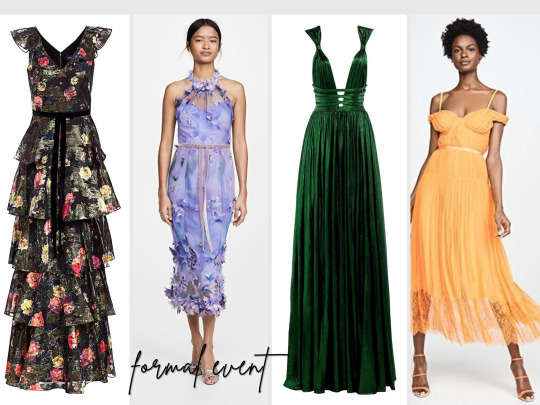

When it comes to more formal wear for her, she still keeps it simple. She really enjoys wearing a lot of accessories. Maybe a couple rings, a bracelet, and a necklace or two. Fashion is how she expresses herself so she likes to use that to her advantage.

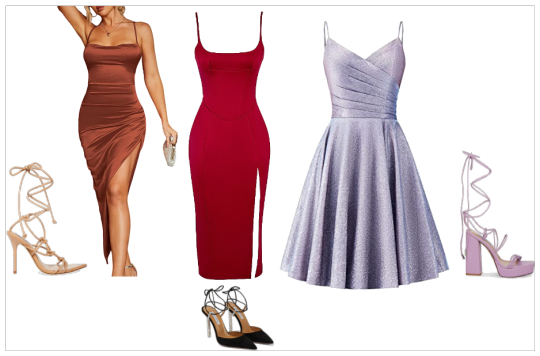
When she goes to parties, she likes to keep it semi casual. She’ll wear some heels to keep the look elevated and she’ll usually have her hair up. She’ll wear something very loose and very flow-y. When she knows that she’s going to dance or move around a lot, she wears things that are shorter and show her legs more so that way she’s not confined to movement. And so she’s not going to tear clothes or anything like that.

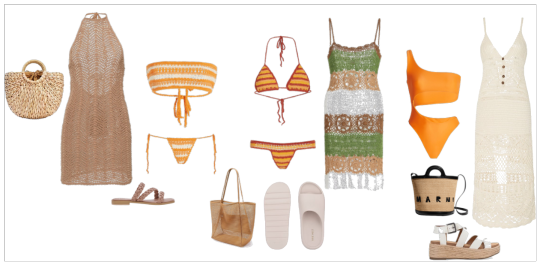
When it comes to beachwear, she’s not too fussed as she likes to wear either a two piece or a one piece. A coverup, along with a beach bag and shoes round out her outfit. And you can never forget the sunscreen!
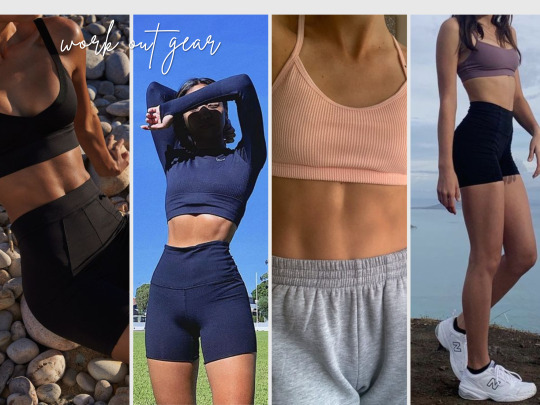
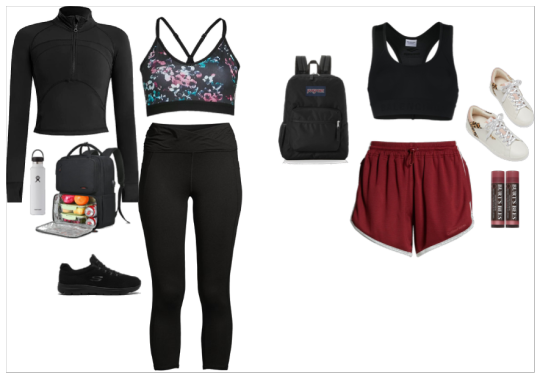
Whenever Chloe is working out, she loves to wear something that allows her to breathe and sweat, nothing too thick in material. She loves to wear a sports bra and some shorts, and she’ll always carry around a reusable water bottle.
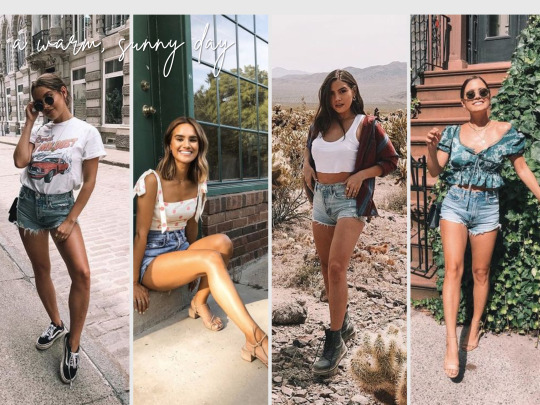
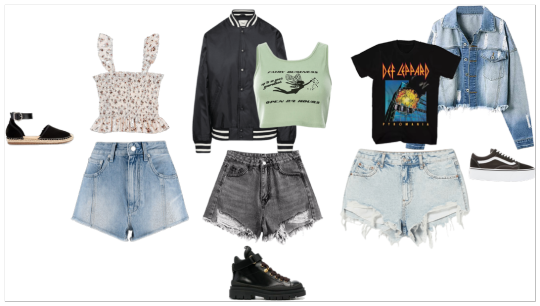
On a warm, sunny day Chloe will most likely wear jean shorts with a cropped T-shirt or a tank top. She’ll reuse a lot of items to make a whole new look, and she loves to make different outfits with the same few pieces of clothing.


As someone who was used to the intense cold from living in New York City for so long, Chloe has definitely figured out how to dress for the winter months. She likes to make realistic and functional outfits for everyday wear. Layers are key when it comes to staying warm, so she’ll always start with a comfortable base layer of top and pants, adding on any jackets or coats to make it warmer.



Going from having to wear business casual for her work attire to being able to dress however she’d like (for the most part), Chloe has taken advantage of that. During her shifts, Chloe will wear a thrifted band T-shirt with some jeans. Other times, she’ll dress up a bit more depending on how she’s feeling. She’ll always try to wear sensible shoes since she’ll be on her feet for most of the day.
#tbh this has been in my drafts since last year in early november and i forgot i had this sitting in my drafts SO i thought i'd just post it#merrockdevelopment#hc • and i’m done losing sleep over things i can't be.#attire • our clothes matched enough to throw me off a bit.
3 notes
·
View notes
Text
Compostable Clothing Closures
Originally posted at my blog: https://garaksapprentice.blogspot.com/2023/09/in-search-of-compostable-closures.html
~~~
Making clothes that are 97% biodegradable is surprisingly easy. Pick a natural fibre fabric, buy some 100% cotton or linen thread, and you're there. (You can even get 100% cotton overlocker thread - though you have to go searching for it.)
Those last few percent, though? That can be tough. One of the biggest offenders is closures. While there are plenty of clothes that don't need something to hold them shut, I confess I like having the option. Below is a round-up of various closures, and their compostability.
Note: for the purpose of this article, I'm treating metal closures as "compostable", in the sense that they're 1) easy to remove before you compost the rest of the object, and 2) infinitely reusable on other things, unless they break - at which point they're usually recyclable using our current commercial systems. And remember, re-using things that already exist is always preferable to buying new, "better" items.
Buckles/Rings
While less common than other closure methods, I find buckles, D-rings and O-rings are great when used in the right context. They're usually metal or plastic, neither of which are compostable - but metal will last practically forever, if it's good quality. Plastic tends to degrade over time, especially if exposed to the sun.
I find rings especially quick and easy to use, and a set of D-rings can give a very fine-tuned amount of tightening. My favourite belt uses two square D-rings instead of a buckle closure.
Buttons
The humble button, while ubiquitous now, took a while to catch on. Buttons as a common method of closure didn't become popular in Europe[^1] until about the early 1300s, around the same time that the tailoring revolution[^2] happened.
Nowadays, plastic is by far the most common material that buttons are made from. It's cheap and sturdy, but obviously it doesn't compost. So what are some alternatives?
Liz Haywood, a pattern maker who focuses on zero-waste designs, has thought a bit about this conundrum here. There's photos of several different DIY compostable and recycled buttons in her post.
For a completely compostable garment, wood, leather, horn, fabric, and thread buttons are your best bet. If, like most sensible people, you remove the buttons from something that's about to be worm food before you ditch it, the options expand considerably - metal, clay, recycled bottle caps, even glass buttons are all possible. You can have a lot of fun with making your own buttons - to match an outfit, or contrast with it, or maybe you'd like a different button for every buttonhole...
Another, related option is cufflinks - 18th century shirts often used cufflinks on the sleeves and one or two small thread buttons on the collar. That way one set of cufflinks could be used on multiple shirts, showing off a bit of wealth, while saving them from the (admittedly harsh) laundry practices of the day.
[1]: I have no doubt that buttons became popular in other parts of the world, too, but unfortunately I don't know much about it. Europe in the 14-15th century is my main area of study, mostly due to the fact that the historical re-enactment group that I'm a part of operates in that time period.
[2]: The tailoring revolution refers to the period where garments for the higher classes underwent a dramatic change in the way they were cut out. The very short version is, fashion garments shifted from primarily rectangular construction to more form-fitting, using the precursors of many standard cutting practices used today.
Elastic
While elastic isn't technically a closure, it's used that way in many different objects. Most elastic nowadays is made from polyester and synthetic rubber. No composting there.
But, all is not lost! You can now find elastics made of natural rubber and cotton! (I was quite impressed by this, to be honest. I thought I'd have to give up elastic for good.)
The downside, as is usual when you actually give a crap about the planet, is cost. You'll mostly only find it for sale online (Etsy has several options), and it can be more expensive (especially factoring in shipping). Prices on the compostable elastics I found were comparable to a mid-range polyester elastic at Spotlight (before shipping). I think that's actually pretty good, all things considered. (I don't trust the cheapest elastic, it loses its stretch ridiculously fast. A fact I discovered to my sorrow only after buying a 20m roll of it.)
As a bonus, supposedly natural rubber elastic lasts longer than synthetic elastics - this has been my experience with many natural vs synthetic things, but I haven't tested natural elastic specifically to know for sure.
The biggest downside here is the rubber - if you're dealing with a latex allergy, this is not the solution for you.
Hooks and Eyes
While these have fallen out of favour over the years, they do have their uses in a compostable closet. They're easy to buy, and easy to make if you can get hold of the wire - all you need is a set of needle-nose pliers.
Being metal, the hook/eye can be re-used until it breaks - which takes a while. Like buttons, they're easy to take off a garment and move to another one. Unlike buttons, they don't need a buttonhole - you can move both the hook and eye almost anywhere on a garment, really refining the fit of an item.
They are, however, somewhat limited in that application - hooks and eyes work best if they're under a small but constant amount of tension, pulling in opposite directions. I once tried to use hooks and eyes on a loose-fitting medieval tunic, and it just didn't work.
Laces and Ties
Before buttons became The Big Thing in medieval Europe (and for quite a few centuries after), laces and ties were the closure method du jour. Why did they stick around so long? The same reason pyjama pants often have a drawstring in them - they add adjustability to garments in a simple and easy to use (and create!) way. Stays and corsets are one of the most recognisable examples of this concept in action.
Lacing does work better on some things than others, but just about anywhere that you'd put elastic nowadays can likely use a drawstring instead. And there are some patterns (YouTube link) for adjustable garments that use lacing as an integral part of the design.
The main downside for me? They can be slow to use, and awkward, if you have difficulty with fine motor control. Mine is variable enough that I'll usually opt for a different closure, unless lacing or ties really is the best or only option.
Snaps
Confession: I adore snaps. They're fast and easy to use when my hands don't want to co-operate, and they can be wonderfully decorative as well as functional.
There are two general types - those you sew into place like you sew on hooks and eyes, and ones that are applied to the fabric using a press. The former takes more time to install, but can be replaced relatively easily if they stop working. The latter can technically be replaced, but it's a LOT harder and you risk damaging the fabric behind it while you try. They're also more likely to rip out of the fabric in the first place.
As for material, it's pretty much just metal and plastic (sometimes a combination). From a sustainability standpoint, metal is the better option - as long as you recycle it at the end of its life.
Zips
Zips are everywhere nowadays. They're easy to use, but can be hard to replace when they break. Putting them in correctly isn't always a cake-walk either. And in terms of compostability, the answer is definitely "no".
The vast majority of zippers on the market use a polyester or poly-cotton tape, with plastic or metal teeth set into it, and plastic or metal tabs and pulls. Because of the mix of materials, and the size of a typical zip, most municipal waste streams can't take them for recycling. However, textile recyclers[ ^3] such as Upparel usually take zips (and the things they're attached to!).
I also found a couple of different manufacturers creating zips out of post-consumer recycled materials - a pleasant surprise, and a strong move towards closing waste streams.
[3]: Clothing retailers are increasingly taking responsibility for their part in reducing waste by offering recycling programs through their stores. Recycling Near You and Frankie list some of the major programs in Australia, though it's worth noting that most of those listed only want whole textiles or large pieces - to my knowledge, Upparel is the only place that will take scraps, broken textiles, and related.
If I've missed a closure type, or you know of places selling compostable or truly recyclable versions of any of the above, I would love to hear about it. While I'm (currently) a far less prolific sewist than the blog name implies, I want to be deliberate and thoughtful in my sewing choices going forward.
Also, as a last random thought, I wonder if anyone has started making bioplastic versions of any of the above? Wanders off to do some research...
9 notes
·
View notes
Text
How to Create an Affordable Tea Sampling Kit - Basketleaf
Tea sampling kits are a fantastic way to attract new customers by allowing them to try various flavors before committing to full-size products. For a small business, creating an affordable tea sampling kit can drive sales, expand brand reach, and build customer loyalty, all within a budget-friendly framework. Here’s a step-by-step guide to creating a best business under 1lakh.
1. Select the Right Tea Varieties for Sampling
A variety of flavors in your sampling kit helps showcase your range and meet different taste preferences.
Choose Core Flavors: Include your best-selling teas or most unique blends to give customers a taste of your signature offerings.
Add Seasonal or Limited-Edition Flavors: A mix of year-round favorites and seasonal flavors can keep the sampling kit fresh and exciting.
Consider Theme-Based Kits: Create kits based on themes such as “Wellness Blends,” “Classic Favorites,” or “Chai Lovers,” which can appeal to specific interests.
2. Use Small, Cost-Effective Packaging
Keeping packaging simple and functional can save costs without compromising presentation.
Choose Recyclable Bags or Small Tins: Small zip-lock bags or recyclable tea pouches are cost-effective and environmentally friendly. Small tins are also a popular option if budget allows.
Include Serving-Size Portions: Package each sample in a single or double-serving size to reduce costs and ensure customers get just enough to appreciate the flavor.
Label Simply: Design basic labels that include the tea name, ingredients, and a brief description. Using printable labels or stickers allows you to avoid costly custom printing.
3. Source Ingredients Locally and in Small Quantities
Buying ingredients in smaller amounts lets you keep the initial investment low.
Look for Local Suppliers: Sourcing from local tea growers or ingredient suppliers can reduce costs and promote sustainability.
Purchase in Bulk for Core Ingredients: For popular flavors, buy in bulk to save money, then portion out for the sampling kit.
Consider Single-Origin Teas: Single-origin teas are often simpler to source and can be a unique selling point if customers want a more authentic, unblended experience.
4. Create a Simple Yet Attractive Box or Bag
Your sampling kit’s outer packaging should be eye-catching but affordable.
Use Kraft Paper Boxes or Reusable Bags: Kraft paper boxes are cost-effective and offer a natural, eco-friendly look. Alternatively, use small cotton or jute bags for a reusable option.
Customize with Stamps or Stickers: Adding your logo with a stamp or sticker is an affordable way to personalize the packaging without investing in expensive printing.
Keep It Compact: A small, lightweight package helps reduce shipping costs and makes the kit more convenient for customers.
5. Include a Tasting Guide
A tasting guide adds value to the sampling kit, enhancing the customer experience and educating them about the teas.
Create a Simple Tasting Card: Provide a card with descriptions of each tea, tasting notes, and brewing instructions. This can be printed on quality paper without major costs.
Add Pairing Suggestions: Briefly mention food pairings or recommended occasions for each tea (e.g., “Perfect with a light breakfast” or “Ideal for evening relaxation”).
Explain the Benefits: If you’re offering wellness or functional teas, add notes about the health benefits (e.g., “Calming chamomile for stress relief”).
6. Offer Customization Options
Allowing customers to choose their own samples can make the kit more appealing and help you avoid overstocking less popular varieties.
Offer a “Build-Your-Own Kit” Option: Let customers select from a range of teas to create a personalized kit.
Feature Add-Ons: Offer add-ons like a small honey packet, reusable tea filter, or a personalized thank-you note for an extra touch without a significant cost increase.
Bundle with Discounts: Provide a discount on a full-size purchase of any tea from the kit to encourage additional sales.
7. Use Affordable Marketing for Launch
Launch your sampling kit with simple, low-cost marketing strategies to reach your target audience.
Promote on Social Media: Share visually appealing photos and videos of your sampling kit on Instagram, Facebook, and Pinterest.
Collaborate with Influencers: Send free sampling kits to influencers or bloggers in the tea or wellness niche to gain exposure.
Offer a Referral Discount: Encourage customers who try the kit to share it with friends, offering a discount on their next purchase for each referral.
8. Price the Kit to Ensure Profitability
Determine a price that covers costs while making the kit affordable to attract more buyers.
Consider All Costs: Include the cost of ingredients, packaging, labeling, and shipping when setting the price.
Research Competitors’ Prices: Check out the prices of similar sampling kits to ensure your price is competitive while offering value.
Bundle With Other Offers: If feasible, offer a discount when the sampling kit is purchased with another product to drive larger orders.
9. Provide a Feedback Mechanism
Feedback from sampling kit customers is valuable, especially when refining your kit or adding new varieties.
Include a Feedback Card: Add a simple feedback card or QR code that links to an online survey to gather customer opinions.
Offer a Discount for Reviews: Encourage customers to leave a review or share their experience on social media in exchange for a small discount on their next purchase.
Analyze Feedback for Insights: Use feedback to adjust your offerings, tweak flavors, and determine which teas have the most potential for larger-scale production.
10. Keep an Eye on Seasonal Trends
Adapting your sampling kit to include seasonal or festive teas can increase appeal and keep customers coming back to try new selections.
Rotate Seasonal Blends: Refresh your sampling kit with flavors that match each season, like spiced teas in winter and floral notes in spring.
Offer Limited-Edition Kits: Seasonal, limited-edition kits can create a sense of urgency and encourage customers to purchase before they’re gone.
Create Holiday-Themed Kits: For special occasions like Diwali or New Year’s, consider adding festive packaging or a unique blend to celebrate the season.
Frequently Asked Questions (FAQs)
Q1: How many tea samples should I include in a kit?A kit with 4-6 small samples is usually enough to give customers a sense of variety without overwhelming them. This quantity also allows you to keep the kit compact and affordable.
Q2: Can I sell tea sampling kits online?Yes, tea sampling kits are ideal for e-commerce, especially with the rising demand for small, giftable items. Be sure to account for shipping in your pricing.
Q3: What’s the best way to determine which teas to include?Choose a balance of popular flavors and unique options. If you’re unsure, consider testing different blends on friends or family or releasing a “trial” version to get customer feedback.
Conclusion
Creating a best business under 1lakh is a viable way to promote your tea business while offering customers a chance to explore your range. With careful ingredient selection, cost-effective packaging, and a well-designed tasting guide, you can create a sampling kit that appeals to new and existing customers alike. Add value with customization, seasonal offerings, and customer feedback to make your sampling kit a memorable experience that encourages customers to return for more
0 notes
Link
Check out this listing I just added to my Poshmark closet: Curology Micellar Makeup Remover.
0 notes
Text
Muslin Fabric: A Timeless Choice for Comfort and Versatility
Muslin fabric, a lightweight and breathable textile, has been cherished for centuries for its softness and versatility. Originating from ancient India, this plain-woven cotton fabric remains popular today for its natural comfort and adaptability across various applications.

Key Characteristics of Muslin Fabric
Soft and Lightweight: Muslin is incredibly soft to the touch, with a loose weave that allows air to flow through easily. This makes it ideal for warm climates and comfortable year-round wear.
Breathable and Absorbent: Due to its airy nature, muslin is highly breathable and quickly absorbs moisture, making it perfect for garments, swaddles, and other items used close to the skin.
Versatile and Easy to Dye: Muslin's simple weave takes well to dyes, allowing for a wide range of colors and patterns. It is also easy to work with, which makes it a favorite among designers and artisans.
Common Uses of Muslin Fabric
Clothing: Muslin is widely used in making summer clothing such as dresses, shirts, and skirts due to its light and breathable nature. It is also a popular choice for pajamas and loungewear, providing comfort and softness.
Home Décor and Crafting: Muslin’s versatility extends to home décor, where it is used for curtains, tablecloths, and reusable bags. Its absorbent quality also makes it suitable for kitchen towels and cleaning cloths.
Fashion Design: In the fashion industry, muslin is often used to create prototypes or mock-ups of garments, known as "toiles." This helps designers test patterns and make adjustments before finalizing their designs in more expensive fabrics.
Why Choose Muslin?
Muslin fabric offers a unique blend of comfort and practicality. Its softness makes it gentle on the skin, while its versatility allows it to be adapted to a variety of projects. Whether you’re looking for casual wear, crafting materials, or home décor solutions, muslin provides a natural and affordable option.
Conclusion
With its long history and enduring appeal, muslin fabric remains a beloved choice for those seeking comfort, simplicity, and versatility. Its adaptability across clothing, décor, and crafts makes it an essential fabric for both everyday use and creative projects.
0 notes
Text
Organic Kids Bedding for Daybeds: Stylish and Eco-Conscious Choices!

Organic Kids Bedding for Daybeds: Discover Stylish and Eco-Conscious Choices!
Are you a parent looking for eco-friendly and sustainable bedding options for your children? Look no further than organic kids bedding for daybeds! These stylish and environmentally-conscious bedding sets offer a wide range of choices that prioritize both comfort and sustainability. Organic kids bedding for daybeds is made from non-toxic, organic cotton, ensuring a safe and chemical-free sleeping environment for your little ones. These bedding sets are also hypoallergenic, making them ideal for children with allergies or sensitivities. With their eco-friendly production processes, they are a great choice for parents who want to reduce their environmental impact. Whether you're looking for natural kids bedding or organic bedding specifically designed for daybeds, you'll find a variety of options to suit your needs. From duvet covers to coordinating bedding ensembles, organic kids bedding offers style, comfort, and peace of mind. Make a conscious choice for your children's bedding and choose organic kids bedding for daybeds. Provide them with a safe and eco-friendly sleeping environment while adding a touch of style to their room. Key Takeaways: - Organic kids bedding for daybeds is a stylish and eco-conscious choice for parents. - These bedding sets are made from organic cotton and are non-toxic, hypoallergenic, and chemical-free. - Organic kids bedding is produced through sustainable practices, reducing the negative impact on the environment. - There are various options available, including duvet covers and coordinating bedding ensembles. - By choosing organic kids bedding, parents can prioritize their child's health and well-being while making a positive contribution to the planet.
Stylish and Sustainable Duvet Covers for Daybeds

When it comes to organic kids bedding for daybeds, the Geo Cove Organic Duvet Cover by Coyuchi is a stylish and sustainable option to consider. Crafted from 100% GOTS Certified Organic cotton, this duvet cover offers both comfort and environmental responsibility. The cotton is grown and woven in India, ensuring high-quality and sustainable production practices. The Geo Cove Organic Duvet Cover features internal ties and coconut shell buttons, providing a secure fit for your daybed. This not only keeps the duvet in place but adds a touch of natural elegance to the overall design. The medium-weight fabric offers coziness without being too heavy, making it perfect for year-round use. What sets this duvet cover apart is Coyuchi's commitment to sustainability. The duvet cover is produced in a facility that recycles 90% of its wastewater, minimizing its environmental impact. Additionally, the packaging is made from recyclable materials and comes in a reusable, organic cloth bag, reducing plastic waste. If you're looking for a more relaxed and inviting aesthetic, the Coastal Organic Duvet Cover by Coyuchi is another great option. With yarn-dyed stripes and a crinkled, all-over finish, this duvet cover adds a touch of coastal charm to your daybed. It is also made in a factory that recycles 90% of its wastewater and comes in a reusable organic cloth bag. Both duvet covers are GOTS certified, ensuring that they meet the highest standards of organic and sustainable production. They are designed to provide not only style and comfort but also peace of mind for eco-conscious parents. Organic Kids Bedding Duvet Covers Comparison Duvet Cover Material Features Sustainability Geo Cove Organic Duvet Cover 100% GOTS Certified Organic Cotton Internal ties, coconut shell buttons Produced in a facility that recycles 90% of its wastewater Coastal Organic Duvet Cover 100% GOTS Certified Organic Cotton Yarn-dyed stripes, crinkled finish Produced in a facility that recycles 90% of its wastewater
Versatile Daybeds with Pop-Up Trundle for Easy Transformation

Daybeds with pop-up trundles offer a convenient and versatile sleeping solution for kids' rooms. These daybeds can easily convert from a single twin-size bed to a spacious king-size bed or be used as two twin-size beds, making them perfect for sleepovers or accommodating growing children. With clean lines and attractive angles, these daybeds bring a blend of rustic and traditional style to any space. They are crafted from solid hardwood, ensuring durability and longevity. The solid hardwood construction provides a sturdy foundation for the daybed and ensures it can withstand the active lifestyle of children. The pop-up trundle, which is conveniently stored underneath the daybed, can be easily wheeled out when needed. The pop-up mechanism allows for effortless transformation, providing extra sleeping space in seconds. These versatile daybeds eliminate the need for a box spring, as they come with a series of slats that provide excellent support for the mattress. The slats are designed to evenly distribute the weight, ensuring a comfortable and well-supported sleep surface. Available in a range of finishes, such as rustic walnut or white, these daybeds can complement various bedroom decors. The rustic and traditional finish adds warmth and character to the room, creating a cozy and inviting atmosphere. When it comes to finding the right bedding for these versatile daybeds, Organic Kids Bedding for Daybeds offers a wide selection of options. From organic cotton sheets to hypoallergenic comforters, you can find the perfect bedding to complete the look and create a comfortable sleep environment for your child. Image: Features of Versatile Daybeds with Pop-Up Trundle Benefits Easy conversion from twin-size to king-size or two twin-size beds - Flexible sleeping arrangements for sleepovers or growing children Solid hardwood construction - Durable and long-lasting Convenient pop-up trundle - Additional sleeping space in seconds No need for a box spring - Cost-effective and space-saving Various finishes available (e.g., rustic walnut, white) - Options to match any bedroom decor
Stylish and Coordinated Bedding Ensembles

To create a cohesive and stylish look in your child's bedroom, consider pairing the Geo Cove Organic Duvet Cover or the Coastal Organic Duvet Cover with coordinating bedding ensembles. For example, the Geo Cove Organic Sham by Coyuchi complements the Geo Cove Organic Duvet Cover perfectly, adding an extra layer of style to the bedding ensemble. The Coastal Organic Standard Sham is a matching option for the Coastal Organic Duvet Cover, creating a harmonious blend of design and sustainability. These coordinating bedding pieces come in matching designs and colors, allowing you to create a cohesive and visually appealing look for your child's daybed. Bedding Piece Description Geo Cove Organic Duvet Cover The Geo Cove Organic Duvet Cover features a modern design with a steel blue stripe pattern. Made from 100% GOTS certified organic cotton, it offers both style and sustainability. The medium-weight fabric ensures comfort while the internal ties and coconut shell buttons provide a secure fit. Coastal Organic Duvet Cover The Coastal Organic Duvet Cover showcases a relaxed and inviting aesthetic with yarn-dyed stripes and a crinkled, all-over finish. Like the Geo Cove Organic Duvet Cover, it is made from 100% GOTS certified organic cotton. This duvet cover adds a touch of coastal charm to any daybed. Geo Cove Organic Sham The Geo Cove Organic Sham complements the Geo Cove Organic Duvet Cover with its matching steel blue stripe pattern. Made from organic cotton, it adds an extra layer of style to the bedding ensemble. Coastal Organic Standard Sham The Coastal Organic Standard Sham is the perfect matching option for the Coastal Organic Duvet Cover. With its relaxed design and organic cotton construction, it creates a harmonious blend of design and sustainability. By selecting coordinating bedding ensembles, you can effortlessly create a visually appealing and cohesive look for your child's daybed. These organic bedding options not only prioritize style and design but also contribute to a sustainable and eco-friendly bedroom environment.
Care Instructions for Organic Kids Bedding

Taking proper care of organic kids bedding is essential to maintain its quality and longevity. All of Coyuchi's organic cotton products, including their bedding sets, are machine washable. Follow these care instructions to keep your organic kids bedding clean and comfortable: - Machine wash: Place the bedding in the washing machine on a gentle or delicate cycle. - Cold water: Use cold water to preserve the fabric's color and integrity. - Natural laundry detergent: Opt for a natural, plant-based laundry detergent to avoid harsh chemicals. - Line dry: Whenever possible, line drying is the preferred method to minimize wrinkles and energy usage. - Tumble dry low heat: If using a dryer, select the low heat setting to prevent damage to the fabric. - Remove promptly: Take the bedding out of the dryer promptly to prevent excessive wrinkling. - Wool dryer balls: For natural softening and reduced drying time, add wool dryer balls to the dryer. - Avoid whiteners: Do not use bleaching agents or whiteners as they may affect the color and quality of the bedding. - Non-chlorine bleach: If needed, use only non-chlorine bleach to maintain the integrity of the fabric. - Avoid fabric softeners and dryer sheets: These products can reduce the absorbency of cotton textiles. By following these care instructions, you can ensure that your organic kids bedding remains clean, soft, and comfortable for your little ones. Organic Kids Bedding Care Instructions Step Instruction 1 Machine wash 2 Cold water 3 Natural laundry detergent 4 Line dry 5 Tumble dry low heat 6 Remove promptly 7 Wool dryer balls 8 Avoid whiteners 9 Non-chlorine bleach 10 Avoid fabric softeners and dryer sheets
Benefits of Organic Kids Bedding
https://www.youtube.com/watch?v=ZRVs-Nk_l34 Choosing organic kids bedding for daybeds offers numerous benefits. Organic bedding is made from natural and non-toxic materials, making it hypoallergenic and safe for children with allergies or sensitivities. It is free from chemicals and harmful dyes, providing a healthier sleeping environment. Organic kids bedding is not only good for your child's health but also for the environment. It is produced through eco-friendly and sustainable processes, reducing the negative impact on the planet. By opting for organic bedding, you can contribute to a greener future for your child. "Organic kids bedding is not just about comfort and style; it's about creating a safe and sustainable sleeping environment for your little ones." - OrganicLiving.com One of the key benefits of organic kids bedding is that it is hypoallergenic. The use of natural materials ensures that there are no harsh chemicals or synthetic materials that can cause allergies or skin irritations. This is especially important for children who have sensitive skin or respiratory conditions. Additionally, organic bedding is chemical-free, meaning it is free from harmful substances such as pesticides, herbicides, and flame retardants. These chemicals are often found in conventional bedding and can pose health risks to children. By choosing organic, you are providing a safer and healthier sleeping environment for your child. Moreover, organic kids bedding is eco-friendly. The production of organic bedding involves sustainable practices that prioritize the conservation of natural resources and the reduction of waste. From the cultivation of organic cotton to the manufacturing processes, organic bedding promotes a more sustainable way of living. Creating a safe and sustainable sleeping environment for your child is essential, and organic kids bedding can help you achieve that. By choosing organic bedding for your daybeds, you are making a conscious choice to prioritize your child's health and well-being while also contributing to a greener future. Benefits of Organic Kids Bedding: Hypoallergenic Chemical-free Eco-friendly Promotes sustainability Safe sleeping environment
Conclusion
In conclusion, Organic Kids Bedding for Daybeds offers a wide range of stylish and eco-conscious choices for parents seeking sustainable and non-toxic bedding options for their children. These bedding sets prioritize both comfort and environmental responsibility, with options like organic cotton bedding and hypoallergenic materials. By choosing organic kids bedding, parents can make a positive impact on the environment while ensuring their child's health and well-being. With sustainable production practices and a commitment to using non-toxic materials, organic kids bedding creates a safe and comfortable sleeping environment for children. The use of organic cotton and other natural materials ensures that these bedding sets are free from chemicals and harmful dyes. By opting for eco-friendly and non-toxic bedding, parents can rest easy knowing that they are providing their child with a healthy and safe place to rest. In addition to their sustainable qualities, organic kids bedding offers stylish options and coordinating ensembles for daybeds. With a variety of designs available, parents can choose bedding sets that not only provide comfort and sustainability but also enhance the overall aesthetic of their child's room. Whether it's a whimsical pattern or a more modern design, organic kids bedding offers a versatile and stylish solution for daybeds. Make the choice for organic kids bedding and enjoy the combination of style, comfort, and sustainability. By choosing bedding that is eco-friendly and made from non-toxic materials, parents can create a safe and healthy sleeping environment for their children while also contributing to a more sustainable future.
FAQ
What are the benefits of organic kids bedding for daybeds? Organic kids bedding is made from natural and non-toxic materials, making it hypoallergenic and safe for children with allergies or sensitivities. It is free from chemicals and harmful dyes, providing a healthier sleeping environment. Additionally, organic bedding is made through eco-friendly and sustainable production processes, reducing the negative impact on the environment. What are some popular options for organic kids bedding for daybeds? One popular option is the Geo Cove Organic Duvet Cover by Coyuchi, made from 100% GOTS Certified Organic cotton. It features stylish design, internal ties, coconut shell buttons, and medium-weight fabric. Another option is the Coastal Organic Duvet Cover, which offers a relaxed aesthetic with yarn-dyed stripes and a crinkled finish. Both options are produced in facilities that recycle 90% of their wastewater. How do daybeds with pop-up trundles work? Daybeds with pop-up trundles provide a versatile sleeping solution for kids' rooms. They can easily convert into a king-size bed or be used as two twin-size beds, making them perfect for sleepovers or accommodating growing children. The pop-up trundle can be stored under the daybed and wheeled out when needed. These daybeds eliminate the need for a box spring and are made from solid, plantation-grown hardwood for durability. Are there coordinating bedding ensembles available for organic kids bedding? Yes, there are coordinating bedding ensembles available. For example, the Geo Cove Organic Sham complements the Geo Cove Organic Duvet Cover perfectly, adding an extra layer of style. The Coastal Organic Standard Sham is a matching option for the Coastal Organic Duvet Cover, creating a harmonious blend of design and sustainability. How should I care for organic kids bedding? All of Coyuchi's organic cotton bedding products, including their kids bedding, are machine washable. It is recommended to machine wash them on the gentle or delicate cycle with like colors, using a natural, plant-based laundry detergent. To minimize wrinkles, line drying is preferred, but if using a dryer, it is advisable to tumble dry on low heat and remove promptly. Avoid using whiteners, fabric softeners, and dryer sheets, as they can diminish the colors' brilliance and reduce absorbency. Where can I buy organic kids bedding for daybeds? Organic kids bedding for daybeds can be purchased from various retailers that specialize in organic and eco-friendly products. Online retailers such as Coyuchi offer a wide selection of organic bedding options for children.
Source Links
- https://bedroomsandmore.com/products/bedding/duvet-covers/geo-cove-organic-duvet-cover/ - https://bedroomsandmore.com/products/bedding/duvet-covers/coastal-organic-duvet-cover/ - https://www.wayfair.com/keyword.php?keyword=eco friendly daybed Read the full article
#daybedbeddingsets#Eco-FriendlyKidsBedding#naturaldaybedlinens#OrganicKids'Bedding#sustainablekidsdecor
0 notes
Text
Eco-Friendly Beauty Swaps: Sustainable Alternatives to Popular Makeup Products

Image Credit: Dziana Hasanbekava
Most of our favorite beauty products have a hidden cost (which we'll soon get into). But don’t worry! Making small, eco-friendly beauty swaps can be just as glamorous, without compromising the planet.
A Little Beauty "Something" You Should Know
The beauty industry generates over 120 billion units of packaging each year. Most of it isn't recyclable. And then there’s the actual makeup itself, filled with synthetic chemicals, microplastics, and ingredients that don't do our skin and environment any good.
Don't attack me yet, I'm not saying you shouldn't put on some lipstick or powder. What I'm really trying to say is; how can we look good while doing good? It all starts with swapping out a few key items.
1. Foundation
One of the biggest culprits in the beauty world is foundation bottles. They’re often made of plastic or come in unrecyclable glass.
Eco Swap: Try a refillable foundation. Many brands now offer foundations in reusable containers. Brands like Kjaer Weis and Elate Cosmetics are paving the way by offering eco-friendly packaging and natural, skin-loving formulas.
These brands allow you to purchase refills, minimizing waste. Not only are these organic ingredients better on your skin, but you’ll also cut down on single-use plastic packaging....a win-win!
2. Lipsticks
Lipsticks are another beauty staple that frequently comes in non-recyclable tubes. The good news? Sustainable alternatives exist that deliver just as much pigment and hydration.
Eco Swap: Go for biodegradable or refillable lipstick tubes. Brands like Axiology make lipsticks using all-natural ingredients and biodegradable packaging. RMS Beauty also offers lipsticks in glass and aluminum packaging, both of which are much easier to recycle than traditional plastic.
3. Mascara
Mascara is a makeup must-have, but traditional mascara tubes and wands contribute significantly to waste. Most mascara tubes aren't recyclable due to the mix of plastic and metal components.
Eco Swap: Opt for a zero-waste or refillable mascara. Companies like Trestique and Izzy Zero Waste Beauty offer mascaras with refillable components, cutting down on plastic waste. The packaging is sleek, chic, and eco-friendly, proving that sustainability can still be stylish.
4. Makeup Brushes
Ever thought about what your makeup brushes are made of? Well, many brushes are crafted from the “same ole” synthetic, non-biodegradable materials.
Eco Swap: Look for makeup brushes made from sustainable materials like bamboo and recycled aluminum. EcoTools and Bamboo Naturals offer high-quality, eco-friendly brushes that work just as well as conventional ones. Plus, bamboo is a renewable resource, making it an excellent choice for sustainability.
5. Cleansing Wipes
Makeup removal wipes can be quite convenient, but they’re often non-biodegradable and full of chemicals that aren’t great for your skin or the planet.
Eco Swap: Instead of single-use wipes, try reusable cotton rounds or cloths. Brands like LastObject and Marley’s Monsters offer washable, reusable cotton pads that can be used over and over again. They’re gentle on your skin and reduce the amount of waste generated by your beauty routine.
6. Eyeshadow Palettes
Eyeshadow palettes are often made with plastic, magnets, and mirrors, making them nearly impossible to recycle. An alternative?
Eco Swap: Opt for palettes made with recyclable or compostable materials. Aether Beauty is one brand leading the way, offering gorgeous eyeshadow palettes in zero-waste packaging. The best part? Their formulas are cruelty-free, vegan, and filled with ethically sourced ingredients.
7. Powder Products
Powders like blush, bronzer, and setting powders are another area where waste adds up, especially when packaged in bulky plastic compacts.
Eco Swap: Look for brands that offer refillable powder products. Tata Harper and Alima Pure offer beautiful options with refillable packaging, ensuring you can keep your favorite shades while cutting back on waste.
Why It Matters
You might be thinking, “Do these small swaps really make a difference?” Yes, they do! Every step toward sustainability, no matter how small, contributes to a bigger change. By choosing products that are kind to the environment, you’re voting with your wallet for a future that’s not just beautiful, but also sustainable.
With all that Said
Switching to eco-friendly beauty alternatives doesn’t mean sacrificing quality or style. In fact, many sustainable beauty brands offer high-performing products with the added bonus of being kind to the environment. By making thoughtful swaps, you can still enjoy your beauty routine while helping reduce waste and protect the planet.
So the next time you’re shopping for makeup, ask yourself: can this be reused, refilled, or recycled? Let’s prove that beauty and sustainability can go hand in hand and look fabulous while doing it!
Signing out, kad
References
The global cosmetic packaging market and the rise of sustainable beauty - Euromonitor International.
Cosmetic Design USA - Sustainable beauty
#sustainability#sustainable makeup#eco friendly beauty#ecofriendly#zero waste#zero waste beauty#Green beauty products#vegan#vegan makeup alternatives#Cruelty-free makeup#natural body#natural makeup#natural#natural makeup products#Sustainable beauty swaps#plastic-free cosmetics#plastic free#beauty#non-toxic beauty products
1 note
·
View note